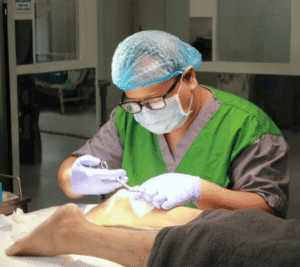Headache treatment plays a crucial role in enhancing overall well-being, especially when nearly 80-90% of people experience headaches at some point in their lives. Headaches can disrupt work, social life, and overall health, making it essential to understand the various causes, types, and treatment options available. This comprehensive guide will walk you through what headaches are, how they are classified, the common triggers behind them, and both conventional and natural methods for effective headache treatment.
What Are Headaches?
Headaches are defined as pains or discomforts located in the head or face area. Their intensity, location, and frequency can vary significantly from person to person. While headaches are often seen as a common nuisance, their impact on quality of life can be substantial—affecting productivity, mood, and daily activities. Recognizing the symptoms and understanding the nature of your headache is the first step in finding an appropriate headache treatment strategy.
Headaches are not a one-size-fits-all issue. They range from mild, occasional discomfort to severe, chronic pain that can be debilitating. For many, identifying patterns in headache occurrences can help in choosing the right treatment and preventive measures. Whether you experience a short-lived tension headache or recurring migraines, an effective headache treatment plan is essential for regaining control over your life.
Types of Headaches
Understanding the type of headache you’re experiencing is key to effective headache treatment. Medical professionals generally classify headaches into two major categories: primary and secondary headaches.
A. Primary Headaches
Primary headaches occur independently and are not a symptom of another underlying medical condition. The headache itself is the main issue. Here are some common types:
Migraines: Migraines are one of the most common primary headaches. They are characterized by intense, throbbing pain often accompanied by nausea, vomiting, and sensitivity to light or sound. Triggers for migraines can vary widely—from stress and hormonal changes to certain foods and environmental factors. For many, identifying and avoiding these triggers is a critical component of effective headache treatment.
Tension-Type Headaches: Often described as a constant band-like pressure around the head, tension-type headaches are typically linked to muscle tension and stress. These headaches can be recurrent and are usually less severe than migraines, yet their persistent nature can still significantly impact daily life. Effective headache treatment for tension headaches may include both pharmacological and lifestyle interventions.
Cluster Headaches: Less common but extremely painful, cluster headaches occur in cyclical patterns or “clusters.” These are characterized by severe pain around one eye or on one side of the head and may be accompanied by nasal congestion or eye tearing. Managing cluster headaches often requires a specialized treatment plan that may involve prescription medications and sometimes oxygen therapy.
Secondary Headaches
Secondary headaches are a symptom of an underlying health condition. They can be more complex because treating the headache requires addressing the root cause. Some examples include:
Cervicogenic Headaches: These headaches originate from problems in the neck. They often follow an injury or chronic strain in the cervical spine, and the pain may radiate from the neck to the head. In such cases, headache treatment focuses on both alleviating the pain and treating the underlying neck condition.
Sinus Headaches: Triggered by sinus infections or inflammation, sinus headaches are characterized by a deep and constant pain in the cheekbones, forehead, or bridge of the nose. The treatment approach may include decongestants, antibiotics (if a bacterial infection is involved), and other remedies to reduce sinus pressure.
Common Causes and Triggers
Identifying what triggers your headaches can help in customizing a headache treatment plan that works best for you. There are several factors to consider:
Internal Factors
- Hormonal Changes: Many women experience headaches linked to hormonal fluctuations, particularly during menstruation, pregnancy, or menopause. Hormone-related headaches are often managed through lifestyle adjustments and sometimes hormonal therapies.
- Dehydration: A common yet often overlooked trigger, dehydration can lead to headaches. Ensuring adequate water intake is a simple but effective aspect of headache treatment.
- Medications: Overuse or withdrawal from certain medications can cause rebound headaches. Consulting with a healthcare provider about the correct usage of these medications is essential.
External Factors
- Environmental Triggers: Bright lights, loud noises, strong odors, or even changes in weather can act as triggers for some individuals. For those sensitive to these external factors, making small adjustments to their environment can significantly improve headache management.
- Dietary Influences: Certain foods and beverages, such as aged cheeses, processed meats, alcohol, and caffeine, have been linked to headaches. Keeping a food diary can help identify any dietary patterns that may contribute to your headaches.
Lifestyle Factors
- Stress: Emotional and psychological stress is one of the leading causes of tension-type headaches. Regular stress management techniques—such as meditation, yoga, and physical exercise—can be very effective in reducing the frequency and severity of headaches.
- Sleep Patterns: Both too much and too little sleep can trigger headaches. Establishing a regular sleep schedule is a crucial step in effective headache treatment.
Effective Headache Treatments and Remedies
A multi-faceted approach is often the most effective way to manage headaches. Below are several strategies that can be integrated into a comprehensive headache treatment plan.
Medical Treatments
Over-the-Counter Options: Many individuals find relief with non-prescription medications such as ibuprofen, acetaminophen, or aspirin. These medications are typically effective for mild to moderate headaches, particularly when taken early in the onset of symptoms.
Prescription Medications: For more severe or chronic headaches, doctors may prescribe medications specifically tailored to treat migraines, cluster headaches, or other types. These can include triptans, anti-nausea drugs, or even preventive medications that reduce the frequency of headaches.
Combination Therapies: Sometimes, combining over-the-counter medications with prescription treatments can enhance overall efficacy. Always consult with a healthcare provider to determine the safest and most effective combination for your specific condition.
Natural Remedies and Lifestyle Adjustments
Hydration and Diet: Staying well-hydrated is one of the simplest yet most effective forms of headache treatment. Complement this with a balanced diet that avoids known trigger foods, and you can significantly reduce the risk of headaches.
Stress Management Techniques: Regular physical activity, deep breathing exercises, mindfulness meditation, and yoga can all help in lowering stress levels, thereby reducing the likelihood of tension headaches.
Alternative Therapies: Many people find that complementary therapies such as acupuncture, massage, or biofeedback provide substantial relief. These treatments work by promoting relaxation and alleviating muscle tension, which are common contributors to headaches.
Sleep Hygiene: Establishing a consistent sleep routine is another critical component of effective headache treatment. Aim for a regular sleep schedule and create a sleep-friendly environment free of distractions to help prevent headaches caused by sleep disturbances.
Combining Approaches
A well-rounded headache treatment plan often involves a combination of both medical and natural remedies. Tailoring the approach to your personal triggers and headache type can lead to better outcomes. For instance, someone with migraines may benefit from both prescribed medications and lifestyle changes such as improved hydration and stress management. Keeping a headache diary can help you and your healthcare provider pinpoint which strategies work best for you.
Preventing Future Headaches
Prevention is as important as treatment when it comes to managing headaches. Once you have identified your headache triggers, making proactive changes can help reduce the frequency of headaches.
Lifestyle Modifications: Adopting a healthier lifestyle can be a game-changer. This includes maintaining a balanced diet, staying hydrated, engaging in regular exercise, and establishing a stable sleep routine.
Identifying Personal Triggers: A headache diary can be invaluable in pinpointing specific triggers. Documenting the time of day, duration, potential triggers, and the intensity of your headaches can provide insights that lead to better prevention strategies.
Long-Term Strategies: For chronic headache sufferers, ongoing consultation with healthcare professionals is essential. They can help monitor your condition and adjust your headache treatment plan as needed. Sometimes, preventive medications or therapies might be recommended to reduce headache frequency.
Environmental Adjustments: Simple changes in your environment, such as reducing exposure to bright lights, minimizing noise, or managing indoor air quality, can also help in preventing headaches.
When to Seek Professional Help
While many headaches can be managed with lifestyle adjustments and over-the-counter medications, there are times when professional intervention is necessary.
Warning Signs: If you experience a sudden, severe headache, a headache that is accompanied by neurological symptoms (such as blurred vision, difficulty speaking, or loss of balance), or a headache that is unusually persistent, it is important to seek medical help immediately. These could be signs of a more serious underlying condition that requires urgent attention.
Persistent Headaches: If headaches are frequent or chronic and do not respond to standard headache treatment measures, consulting a healthcare provider can help in obtaining a proper diagnosis and more targeted treatment options.
Tailored Treatment Plans: A healthcare provider can offer tailored advice and treatments based on your specific symptoms and medical history. This may include diagnostic tests, prescription medications, or referrals to specialists such as neurologists or pain management experts.
Takeaway
Effective headache treatment requires a comprehensive approach that starts with understanding the type and triggers of your headaches. Whether dealing with primary headaches like migraines and tension headaches or managing secondary headaches related to an underlying condition, recognizing the symptoms is key. A combination of medical treatments—ranging from over-the-counter options to prescription medications—along with natural remedies and lifestyle adjustments can lead to significant relief and even prevention of future headaches.
Empowering yourself with the knowledge of what causes your headaches, maintaining a headache diary, and making proactive lifestyle changes are essential steps in your headache treatment journey. By addressing both the immediate pain and the underlying triggers, you can achieve a better quality of life with fewer disruptions from headache pain.
If you find that your headaches persist or worsen despite trying these strategies, don’t hesitate to seek professional help. Medical professionals can provide a tailored headache treatment plan that addresses your specific needs and can help you get back on track to a healthier, more comfortable life.






